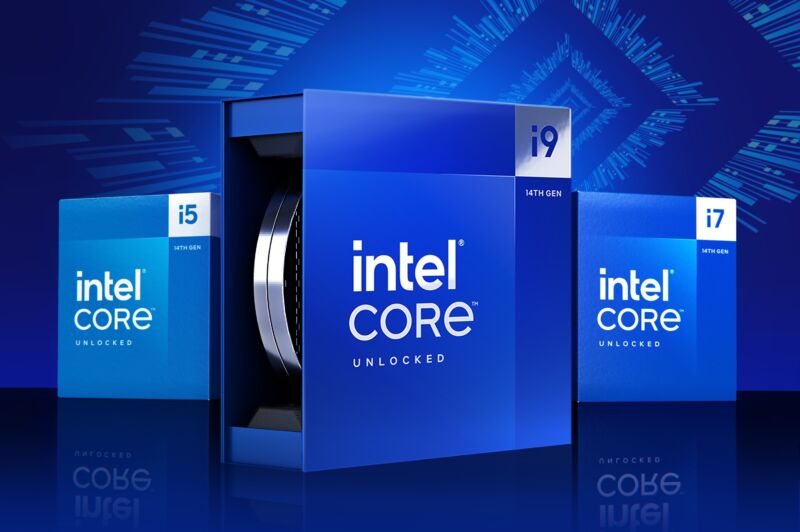
Intel
Intel’s new desktop processor generations haven’t always come with significant generational improvements in recent years, as the company has struggled with new manufacturing tech that enables big leaps in performance and power efficiency. For every major jump—the 12th-generation CPUs, codenamed Alder Lake, come to mind—you usually get several faster but less-than-thrilling iterations.
Intel is officially launching its 14th-generation desktop processors today, and they’re firmly in that iterative, non-thrilling group, even compared to last year’s 13th-generation chips. The good news for price-conscious PC builders is that they’ll continue to work in all current 600- and 700-series motherboards after a BIOS update, and Intel isn’t launching a series of new motherboards to accompany them—there aren’t many compelling reasons to upgrade from a 12th-gen setup to a 14th-gen one, but it’s an available option.
Even the branding Intel is using here signifies that the processors are a throwback—next-gen Meteor Lake chips for laptops and all of Intel’s other chips are losing the generational and i3/i5/i7/i9 branding in favor of “Core” and “Core Ultra.” By Intel’s admission, the last gasp of the 14th-generation branding here is a nod to how similar they are to the 13th-generation chips that preceded them (and, for that matter, the 12th-gen ones before that).
The i9-14900K, i7-14700K, and i5-14600K
The 13th-generation refresh, codenamed Raptor Lake, made small but notable changes to the Alder Lake architecture. In the high-end chips, Intel boosted the maximum number of E-cores and added extra L2 and L3 cache, in addition to small clock speed increases. Power budgets generally went up a bit, too. (For some lower-end chips, primarily non-overclockable chips at the i5 tier and below, Intel kept the Alder Lake architecture fully intact, adding a few E-cores and boosting clock speeds but not actually changing the silicon.)
The 14th-generation CPUs are just Raptor Lake again—no additional E-cores at the high-end, no additional cache, no increase in officially supported memory speeds, and no increase in the default power requirements. Base and Turbo clock speeds across the P- and E-cores increase by 100 or 200 MHz, but that’s it. The integrated Intel UHD 770 GPU is also unchanged.
Intel is launching its new desktop CPUs as it usually does: starting at the top. It’s launching six unlocked and overclockable processors today: three K-series CPUs with integrated GPUs and three otherwise identical KF-series CPUs with no GPUs that cost $25 less.
| CPU | Launch MSRP | P/E-cores | Clocks (Base/Boost) | Total cache (L2+L3) | Base/Max Power |
|---|---|---|---|---|---|
| Core i9-14900K | $589 $564 (F) |
8P/16E | 3.2/6.0 GHz (P) 2.4/4.4 GHz (E) |
68MB (32 + 36) | 125/253 W |
| Core i9-13900K | $589 $564 (F) |
8P/16E | 3.0/5.8 GHz (P) 2.2/4.3 GHz (E) |
68MB (32 + 36) | 125/253 W |
| Core i7-14700K | $409 $384 (F) |
8P/12E | 3.4/5.6 GHz (P) 2.5/4.3 GHz (E) |
61MB (28 + 33) | 125/253 W |
| Core i7-13700K | $409 $384 (F) |
8P/8E | 3.4/5.4 GHz (P) 2.5/4.2 GHz (E) |
54MB (24 + 30) | 125/253 W |
| Core i5-14600K | $289 $264 (F) |
6P/8E | 3.5/5.3 GHz (P) 2.6/4.0 GHz (E) |
44MB (24 + 20) | 125/150 W |
| Core i5-13600K | $319 $294 (F) |
6P/8E | 3.5/5.1 GHz (P) 2.6/3.9 GHz (E) |
44MB (24 + 20) | 125/181 W |

